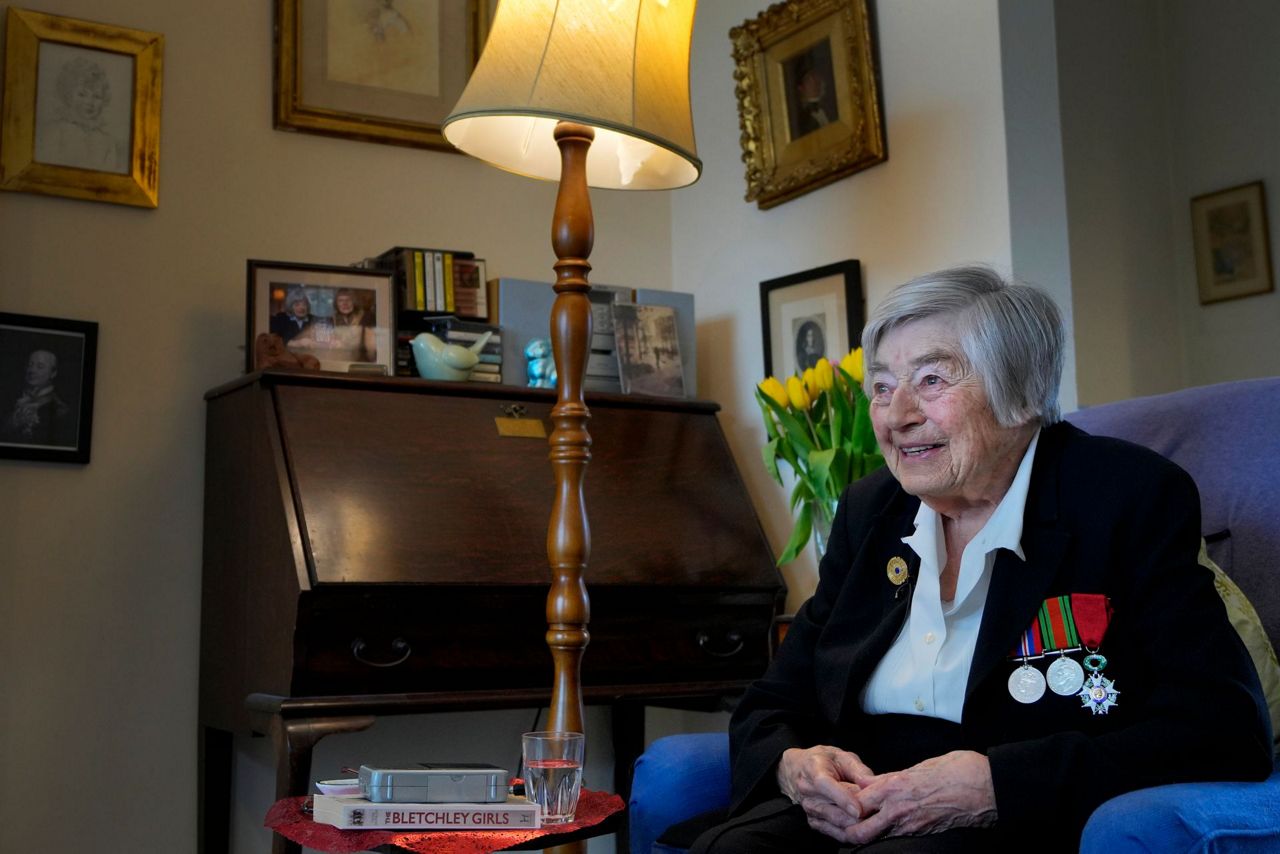LONDON (AP) — Pat Owtram didn’t need to go to war. It came to her.
As the Nazis took control of Germany and Austria, her father hired Jewish refugees to cook and clean at the family home in Lancashire, where the Owtram family raised pedigreed shorthorn cows and Pat rode a pony named Dolly.
One refugee, Lilly Getzel, was a cultured woman from Vienna who told stories of concerts and the opera — exotic fare for Pat, who rarely left her rural home because of fuel shortages. They spoke in a combination of German, Austrian German, and English.
“Wartime evenings, with petrol rationed, were pretty boring," Owtram, who will turn 101 next month, told The Associated Press. “So we did a lot of talking."
All those conversations paid off in 1942, when Owtram applied to join the Women’s Royal Naval Service, known as the Wrens, and a test showed that she was fluent in German. Overlooking a childhood illness that could have disqualified her from service, the Wrens made her one of some 400 women who served at “Y stations” along the British coast during World War II, listening in on German U-boats.
Plain language traffic was translated and passed on to the navy. But coded signals went directly to Bletchley Park, where mathematicians and analysts developed technology to decipher messages encrypted with the previously unbeatable Enigma machine, providing crucial information for Allied military planners in the run-up to D-Day.
The only downside for Owtram was that after contracting bovine tuberculosis as a child, she was barred from serving overseas. Her sister Jean, who died last year, parlayed her language and puzzle-solving skills into assignments in Egypt and Italy as a cipher officer working with the Special Operations Executive, nicknamed Churchill’s Secret Army.
“We could listen to the German fleet when the ships came out of the Baltic or went back or down the North Sea," Owtram said, describing her own service. “So my German was quite useful at home in Britain."
Owtram was awarded the Legion d’Honneur, France’s highest honor, for her work with Bletchley Park.
She did have one surreal moment in the days leading up to D-Day, as she sat on a cliff overlooking the English Channel to relax after a shift.
Looking up from her book, Owtram was startled to see Prime Minister Winston Churchill and Field Marshal Bernard Montgomery, Britain’s most senior military officer, walking up the path toward her.
“I wasn’t quite sure what to do, because if you met those kind of people in the war and were wearing a hat you saluted. If you were not wearing a hat, you did not salute,” she said, recalling her predicament. “So all I could do was wave and say, ‘Hello, everybody! Good morning!’ And, and they all said, ‘Good morning,’ and sort of smiled in a very nice friendly way.”
She heard later that Churchill and Montgomery had wanted to be seen on the Kent coast as part of Allied efforts to fool the Germans into thinking that the invasion would be targeted at Calais, not 150 miles (240 kilometers) to the west in Normandy.
After the war, Owtram worked for the British embassy in Norway and studied at the University of St. Andrews, Oxford and Harvard before getting married and settling into a career in broadcasting. She is often quoted by her married name, Davies.
While she never fired a shot in anger, Owtram and her colleagues did persuade the guards at their base near Dover to teach them how to use a machine gun.
“I did once say I thought I was the only respectable old lady in Chiswick who knew how to use a machine gun,” she said. “I hope I am never asked to demonstrate. I am sure I should miss the target these days.”
Copyright 2024 The Associated Press. All rights reserved. This material may not be published, broadcast, rewritten or redistributed without permission.








